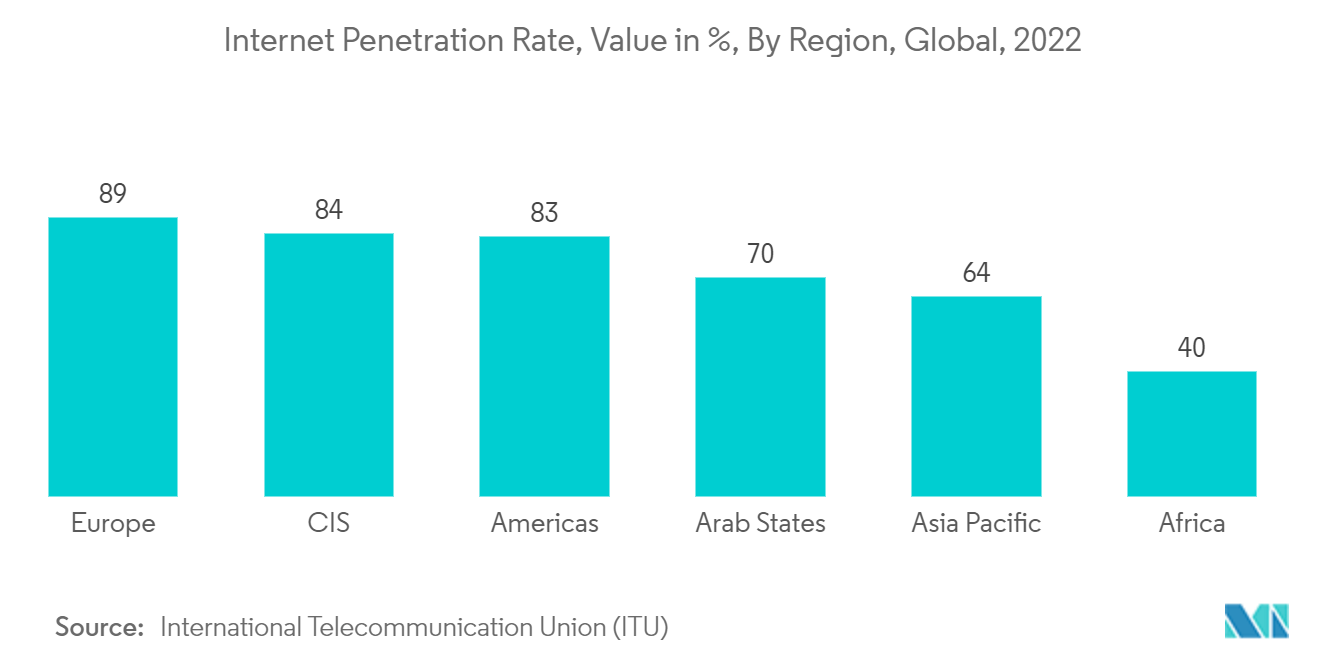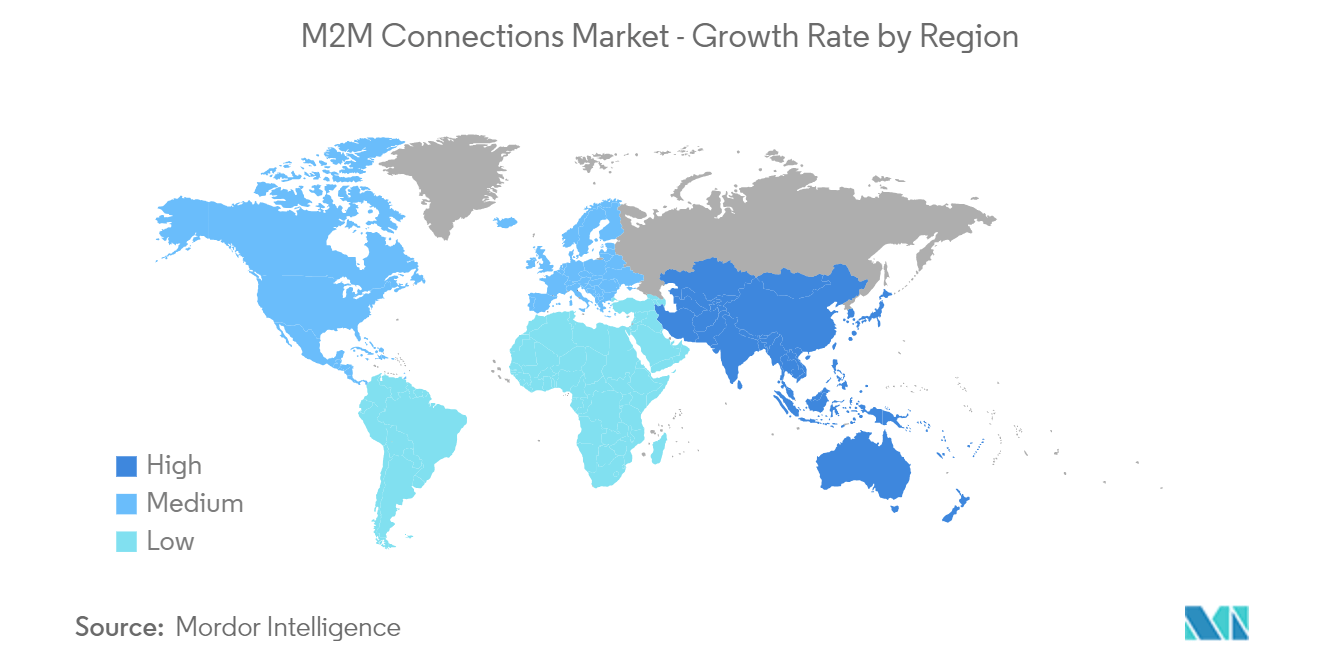Market Trends of M2M Connections Industry
Growing Usage of Internet is Expected to Drive the Market Growth
- The Internet provides more flexibility in terms of working hours and location, due mainly to the proliferation of unmetered high-speed connections. Many methods, including mobile Internet devices, may be used to access the Internet anywhere. Users can access the Internet wirelessly using mobile phones, data cards, portable gaming consoles, and cellular routers.
- According to Speedtest, as of April 2023, Qatar had the fastest average mobile internet connections globally, nearly 190 Mbps. The United Arab Emirates (UAE) and Macau followed, with each of these countries registering average median speeds above 170 Mbps.
- Telemetry usage in daily items like heating units, electric meters, and internet-connected appliances has grown because of the Internet and better wireless technology standards. Previously, telemetry was only used in manufacturing, engineering, and pure science.
- The global focus on machine-to-machine (M2M) connections and the expansion of internet usage are the two main reasons promoting the market's growth for M2M connections. Machine-to-machine (M2M) connections are affected even more by the spread of 4G/LTE cell technologies and the coming of 5G technology.
- According to the ITU, Europe had the most significant internet penetration rate among all world regions in 2022, increasing from just under 60% in 2009 to 89% in the most recent year for which data was available. The lowest internet usage rate, at 40%, was found in Africa. Around 4.9 billion people were reportedly online as of the same year, based on total global internet access.
- Furthermore, governments are actively pursuing new strategies for broadening internet connectivity technologies, thereby increasing M2M connectivity. For instance, in November 2022, officials from the European Parliament and member states of the European Union (EU) announced that they were close to concluding a EUR 6 billion (USD 6.18 billion) agreement to launch a satellite internet infrastructure. The European Commission stated that space-based connectivity is a strategic asset for the resilience of the EU in the modern digital environment. It supports the development of its economy, digital leadership, technical independence, competitiveness, and society.

North America is Expected to Hold Significant Share
- Some of the prominent telecom sector firms are based in the area, including AT&T, Verizon, Cisco, and many more, who are constantly investing in expanding and improving their infrastructure in order to stay up with technological breakthroughs. Over the projected period, it is anticipated to accelerate the adoption of M2M connections.
- The advent of 5G is expected to fuel the growth of M2M connections over the forecast period. M2M communication objectives may be successfully addressed by 5G technology, which has a wide variety of applications, low latency, greater speed, and enormous bandwidth. As an illustration, autonomous cars will use 5G technology to connect with minimal latency and great dependability. Moreover, networking technologies with assured QoS can be offered by the 5G system.
- Furthermore, the number of 5G connections (excluding IoT) in North America will increase from 14% in 2021 to 280 million by 2025, making up 64% of all mobile connections. Canada is expected to rank fourth behind Japan by then, with the United States having the world's second-highest 5G adoption rate, trailing only South Korea.
- Several big companies in the area have been able to improve the technology through research and development, strategic alliances, and mergers and acquisitions. This is expected to increase the use of M2M connections in the area during the projection period.
- For instance, in December 2022, Aeris Communications, a California-based Internet of Things and machine-to-machine (IoT and M2M) communications provider, announced plans to acquire Ericsson's IoT Accelerator and Connected Vehicle Cloud businesses. The agreement is expected to enable Aeris and Ericsson's IoT platforms to link over 100 million IoT devices worldwide in 190 different countries. Additionally, the loT market will grow faster overall owing to the two businesses' merger. The demand for 4G and 5G will include a significant and expanding portion of IoT.


